A diagnostic hysteroscopy is a typical option to start evaluation of your uterine cavity in case of infertility. The procedure is particularly preferable if the fallopian tubes do not require evaluation.
Diagnostic hysteroscopy can also serve as a support procedure when other tests do not show adequate or certain results.
A hysteroscope is a small fiber optic telescope, in the form of a thin lighted tube, connected to a viewing monitor. The tip of the hysteroscope can be inserted into the uterine cavity to view the inside of the uterus.
Hysterosonogram: How it differs from hysteroscopy
A hysterosonogram is another minimally invasive ultrasound procedure aimed at detecting possible abnormalities inside the uterus that might hinder your pregnancy. It is also known by the name saline ultrasound. During the procedure, a hysteroscope (a thin tube lighted on the end) is inserted into the vagina, thus the cervix and inside of the uterus can be seen and evaluated. Then, a small catheter is placed into the cervix and sterile saline is infused into the endometrium. If anything abnormal takes place, a sample can be taken for later testing. The procedure may last approximately 20 to 30 minutes and may also be applied to inspect the fallopian tubes.
Hysterosonogram or any other appropriate evaluation method is a prerequisite to performing IVF. It involves no radiation and poses minimum risk to the organism. In comparison with a regular ultrasound, this technique allows more precise detection of abnormalities on the inside walls of the uterus due to infusing contrast agent inside the uterus. The walls separate from each other allowing gynecologists to identify any abnormalities that might have been hiding along the sides of the walls.
For better understanding of the technique, a woman's uterus may be represented as a collapsed balloon. If a minor growth or bump occurs in the inside wall, it might be hard to detect since the top and bottom walls are touching each other. If the balloon is inflated, a minor cell mass is easier to see as it will likely hang away from the wall.
However, with all the advantages, in some cases, the quality of images obtained during the procedure may not be optimal. Typical factors impacting their quality include the following:
- The patient is overweight or obese;
- The position of the uterus does not allow appropriate imaging;
- The separation of the walls does not allow appropriate imaging due to inadequate filling of saline;
- Uterine inner layer is excessively thick.
Separate and combined application
A hysterosonogram reveals abnormalities of all origins no matter their clinical importance. Blood, loose fragments of the inner layer of the uterus, or air bubbles will also be indicated during hysterosonogram. This procedure alone is not a sufficient technique to certainly define if a detected abnormality is a relevant problem.
In a number of cases visualization quality proves inefficient, particularly for small abnormalities, and our medical specialist might prefer to check whether it should be treated or not. Thus, he or she might ask you to undergo a diagnostic hysteroscopy to clarify the abnormality.
As hysteroscope can be placed directly into the uterine cavity, it allows assessing the details, thus the procedure can be used as a backup for an inadequate hysterosonogram.


